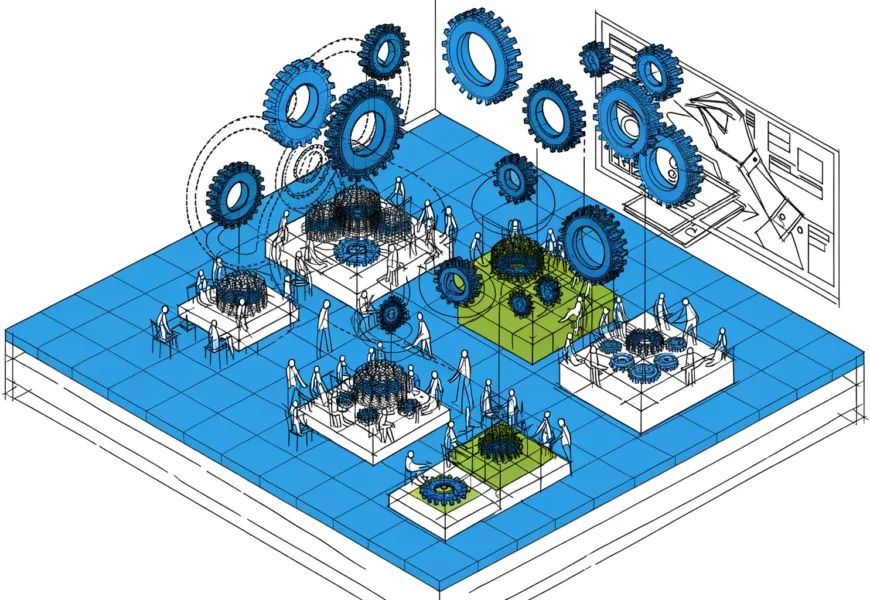In today’s fast-paced business environment, optimizing team workflows is critical for enhancing productivity and fostering collaboration. Efficient workflows not only accelerate project timelines but also improve communication, reduce errors, and boost team morale. Whether you’re striving for better project management, improved communication, or streamlined operations, mastering team workflows is key. In this guide, we’ll explore effective strategies and tools to elevate your team's efficiency and collaboration.
Understanding Team Workflows: A Comprehensive Overview
Team workflows refer to the systematic sequence of tasks and processes that a group follows to achieve a common goal. At its core, a well-structured workflow is crucial for maximizing productivity and operational efficiency by ensuring each team member knows their role and deadlines. However, managing team workflows can be fraught with challenges such as miscommunication, bottlenecks, and redundancy, which can hinder seamless operations and lead to productivity losses.
Intentionally streamlining these workflows can mitigate common challenges, allowing teams to adapt quickly to changes and maintain a competitive edge. Understanding the importance of these processes lays the groundwork for adopting more effective methodologies and tools.
Key Strategies to Optimize Team Workflows
One of the first strategic moves towards workflow optimization is task prioritization. By identifying the most critical tasks, teams can focus their efforts where they are most needed, resulting in better time management and efficiency improvement. Employing agile methodologies can further enhance adaptability, enabling teams to pivot strategies as requirements evolve.
Fostering an open communication culture is another essential strategy. Encouraging transparent and frequent communication enhances team synchronization, allowing for real-time collaboration. Developing a workspace synergy where feedback mechanisms are integral can significantly improve decision-making and team dynamics.
Regularly reviewing and refining processes is vital in ensuring workflows stay efficient and relevant. Through process innovation, teams can continuously improve methods, eliminating outdated practices and integrating more efficient solutions.
Tools and Technologies for Effective Workflow Management
Today's digital landscape offers a plethora of tools designed to optimize workflow management. Project management software like Trello and Asana provides a robust platform for tracking progress, assigning tasks, and managing resources. These tools streamline communication pathways and foster collaborative solutions by offering a shared platform for all team members.
Similarly, communication platforms such as Slack and Microsoft Teams facilitate seamless communication, especially for virtual teams. These tools support real-time interactions and information flow, crucial for maintaining a cohesive team environment even when remote collaboration is necessary.
Time-tracking tools such as Harvest or Toggl hold teams accountable by providing insights into how time is allocated and identifying areas for efficiency tracking. Document-sharing services like Google Workspace or Dropbox ensure that information is easily accessible and stored securely, enhancing both productivity and collaboration.
Building a Collaborative Culture to Enhance Workflows
A collaborative culture serves as the backbone of efficient workflows. Encouraging participation in decision-making can empower team members, leading to increased engagement and accountability. Team engagement is further fostered by continuous feedback and support, promoting a nurturing environment for growth and innovation.
Recognizing and celebrating achievements is also crucial in boosting morale. Acknowledging contributions fosters a sense of accomplishment and motivates teams to maintain high performance. This approach not only improves individual satisfaction but also contributes to overall team productivity gains.
Measuring and Analyzing Workflow Efficiency
To ensure your workflow strategies are effective, it's essential to measure and analyze performance regularly. Establishing key performance indicators (KPIs) provides a clear metric for assessing workflow efficiency. These metrics offer valuable insights into workflow processes, highlighting areas of strength and those needing improvement.
Data analytics tools can further assist in this process by providing detailed reports on team performance and identifying workflow challenges. Regular performance reviews enable teams to implement resource management strategies and strategic planning, driving continuous improvement and adaptation strategies.
Conclusion
Streamlining team workflows is a proactive approach to ensuring your team operates at its highest potential. By implementing effective strategies, leveraging the right tools, and fostering a collaborative culture, your organization can achieve remarkable productivity gains. Take the next step in optimizing your team’s workflows and watch as efficiency and collaboration reach new heights. Ready to transform your team's effectiveness? Start today and see the difference!
Incorporating these strategies into your daily operations will not only streamline communication and improve efficiency but also create a resilient, adaptable team ready to tackle any project. Remember, the key to effective teamwork lies in continually evolving and optimizing your processes.



